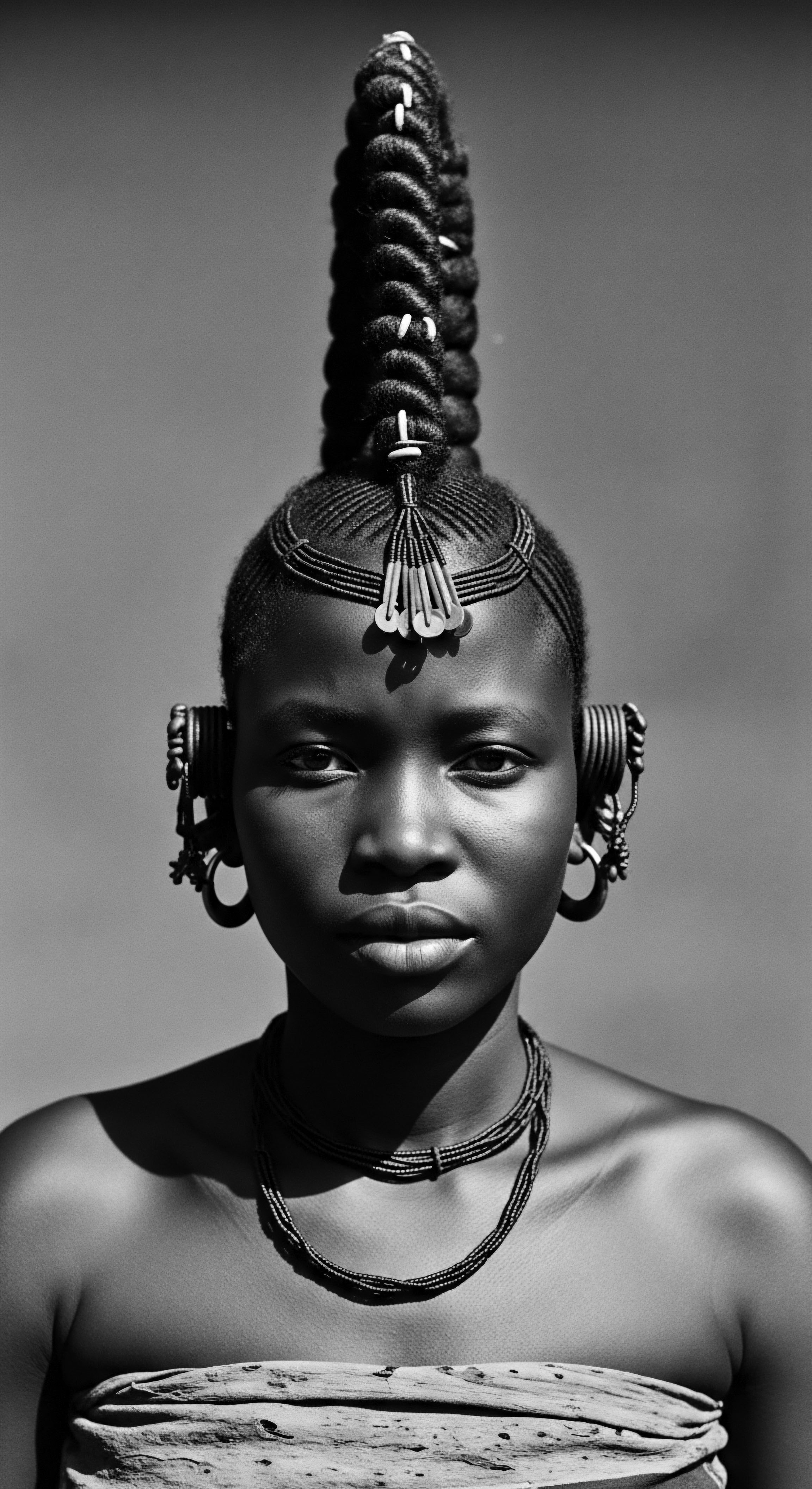
Fundamentals
The Quechua Braids, at their most elemental, represent a traditional hairstyle deeply rooted in the cultural fabric of the Quechua people, a prominent indigenous group scattered across various regions of South America, most notably Peru and parts of Bolivia, Chile, Colombia, and Ecuador. They are a visible expression, a physical manifestation of heritage woven into the very strands of hair. The term ‘Quechua Braids’ itself points to a specific form of hair styling, often long and plaited, that holds immense cultural significance within these communities. They are more than simply a means of tidying hair; they are living artworks conveying stories from the past, representing different aspects of the wearer’s life.
The practical application of Quechua Braids involves techniques passed down through generations, often utilizing the hair’s natural texture to create durable and symbolic styles. These braids frequently incorporate colorful ribbons or decorative elements, adding personal touches that speak to individual identity while simultaneously highlighting collective cultural heritage. The practice itself is often a communal activity, intertwining not only hair but also kinship, stories, and shared knowledge within families and villages. This elemental understanding of the Quechua Braids helps us grasp their foundational role as a visual language of connection and belonging within Quechua communities.
Quechua Braids embody a cultural language, where each plait and adornment speaks volumes about identity and lineage within Andean communities.
For Quechua women, hair possesses a profound cultural significance, symbolizing both personal identity and marital status. Women of all ages traditionally wear long braids. A woman’s social standing is reflected in her braids ❉ married women typically wear two braids, while a single braid or multiple braids indicate a woman is single.
- Social Markers ❉ Braids clearly communicate a woman’s marital status.
- Identity ❉ Braids are an inseparable part of a Quechua woman’s individual and collective identity.
- Community Connection ❉ The communal act of braiding strengthens social bonds and transmits cultural knowledge.
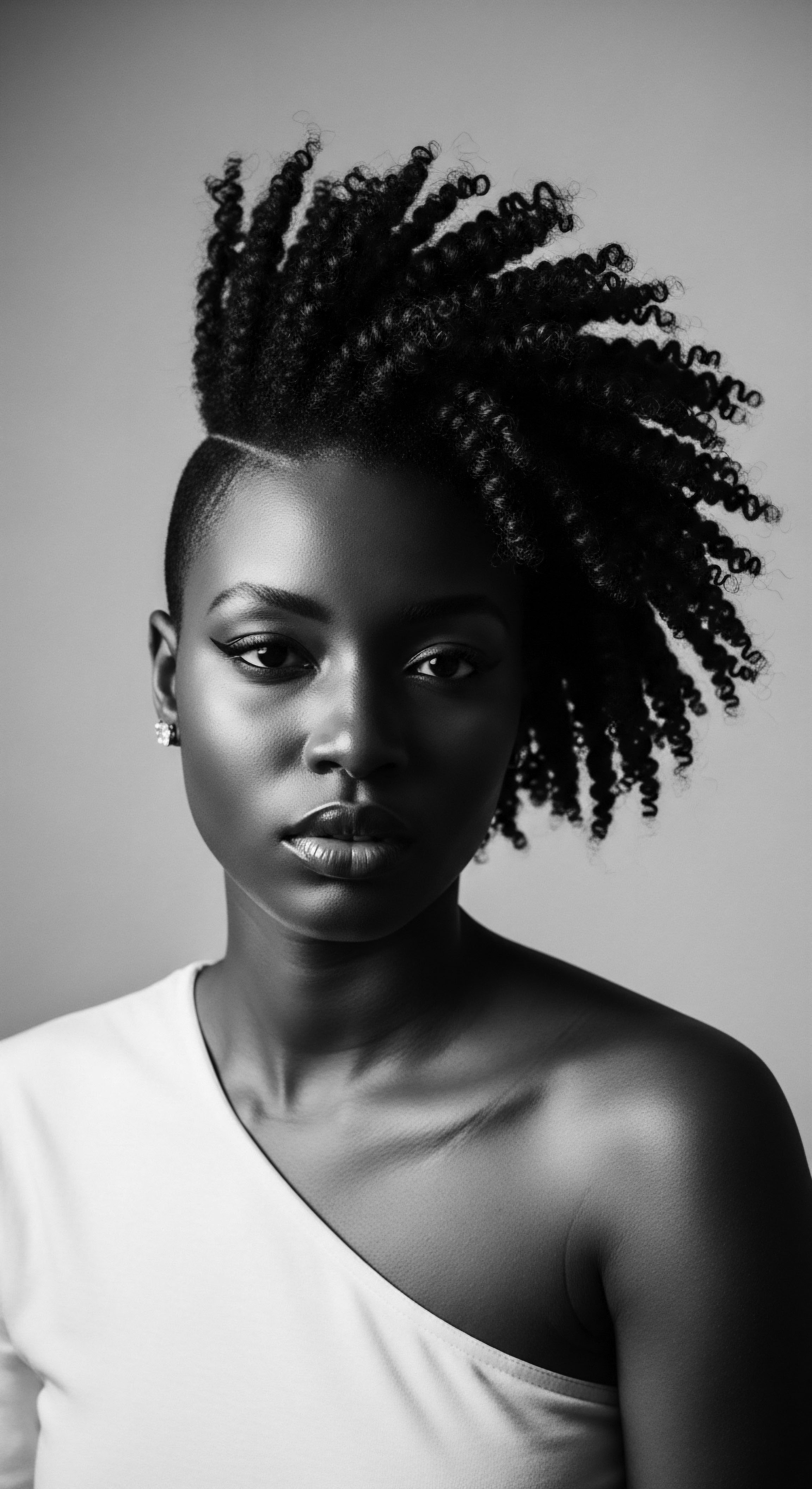
Intermediate
Moving beyond a basic understanding, the Quechua Braids reveal layers of meaning and historical context, serving as a powerful conduit for ancestral practices and expressions of resilience. Their existence speaks to a continuous thread of hair knowledge that stretches back millennia in the Andes. This continuity is particularly striking given the historical pressures faced by indigenous cultures in the region. Hair itself was considered a conduit for spiritual power in ancient Andean worldviews, a belief that underscores the profound connection between the physical and the metaphysical aspects of self.
The craftsmanship involved in Quechua Braids transcends mere aesthetic appeal; it reflects an intimate understanding of hair’s natural properties and the art of shaping it for both practicality and profound cultural statement. The resilience of these braiding traditions mirrors the enduring spirit of the Quechua people. Despite colonial influences and the imposition of new norms, the ancestral hair practices persisted, adapting while maintaining their core significance. This enduring tradition serves as a testament to the strength of cultural memory and the determination to preserve practices that embody identity.

Cultural Syncretism and Adaptation
The arrival of Spanish colonizers in the 16th century profoundly impacted Andean societies, yet hair braiding traditions, like many other cultural practices, showed remarkable adaptability. While some indigenous interment practices were disrupted, ancient textile traditions, including those related to fiber preparation that could extend to hair, were preserved through dry burial customs. The synthesis of traditional indigenous practices with new materials or concepts introduced through colonial encounters created new forms of expression, all while retaining the ancestral essence. This is evident in textiles, where indigenous techniques continued but often incorporated a medley of indigenous, European, and even Asian iconography.
The enduring presence of Quechua Braids, despite centuries of external pressures, underscores the profound resilience embedded within indigenous hair traditions.
The hair itself, often dark and long, has consistently symbolized beauty for Peruvian women, with braids serving as a historical marker of status across various empires that have risen and fallen in the region. This speaks to a deeper anthropological insight ❉ hair, across diverse cultures, frequently acts as a visual signifier of age, tribal affiliations, ethnicity, religion, and social standing.
| Aspect of Hair Care Hair as Spiritual Conduit |
| Traditional Andean Practice Belief that head hair channels spiritual power. |
| Cultural or Symbolic Significance A direct link to ancestral wisdom and the divine realm. |
| Aspect of Hair Care Braiding as Communication |
| Traditional Andean Practice Specific braiding patterns convey marital status or community ties. |
| Cultural or Symbolic Significance A visual language, communicating identity and social standing without words. |
| Aspect of Hair Care Ritual Hair Cutting (Rutuchicuy) |
| Traditional Andean Practice First hair cutting ceremony for children. |
| Cultural or Symbolic Significance A rite of passage, often associated with a child's entry into a social structure and community blessings. |
| Aspect of Hair Care Hair Adornment |
| Traditional Andean Practice Incorporation of colorful ribbons, beads, or yarn. |
| Cultural or Symbolic Significance Personal expression and a further declaration of cultural heritage; colors may carry specific regional or symbolic meanings. |
| Aspect of Hair Care These practices illuminate how hair in Andean cultures is deeply intertwined with spiritual beliefs, social structures, and continuous cultural expression, preserving heritage. |
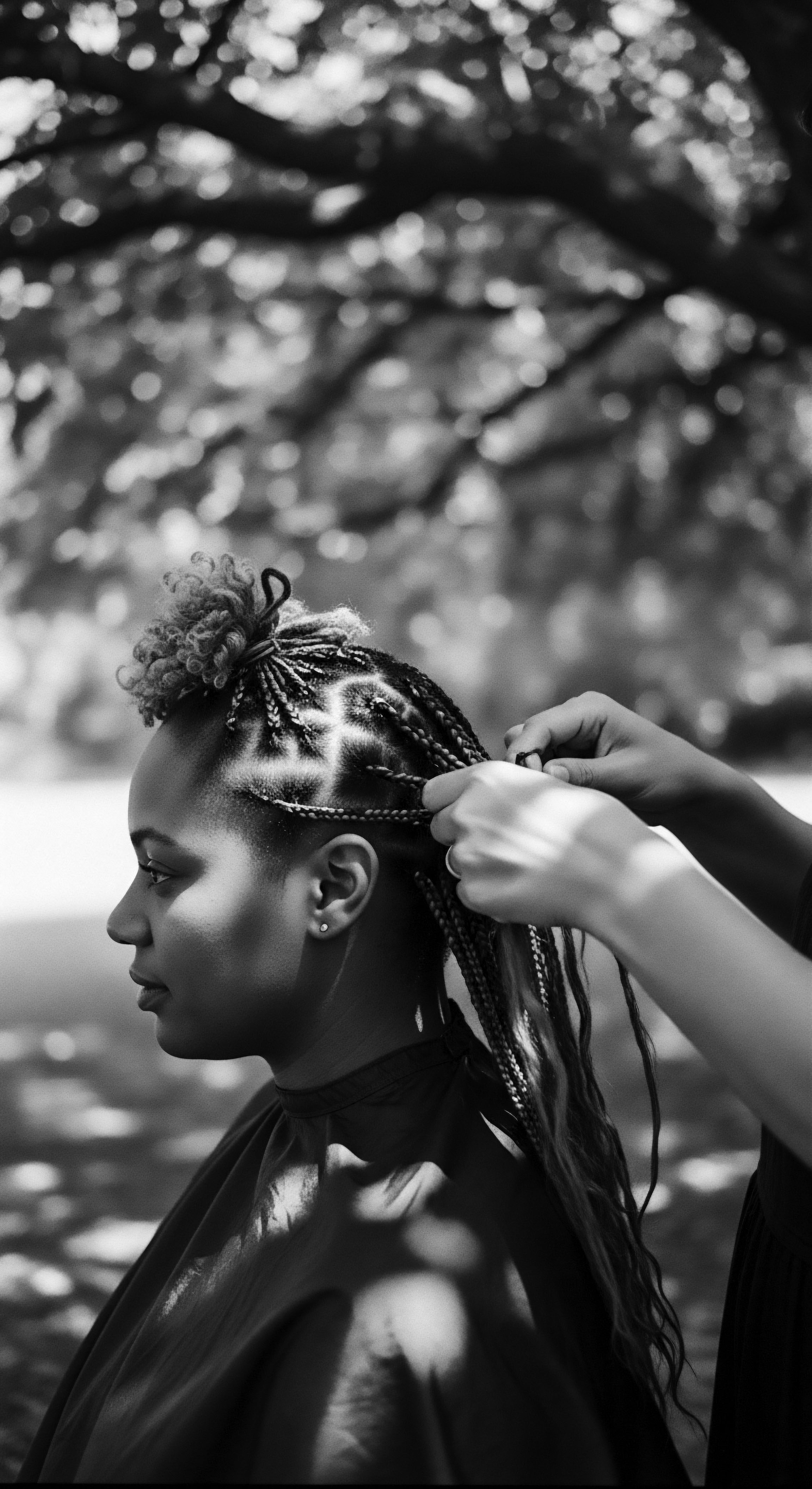
Echoes of Ancestral Science in Hair Care
Ancestral hair care practices, while not always explicitly documented in scientific terms, often demonstrated an intuitive understanding of hair biology. The use of natural ingredients sourced from the Andean landscape for cleansing, strengthening, and conditioning hair was common. This deep connection to the land and its botanical offerings provided a foundation for holistic hair wellness, aligning with the Roothea ethos.
Such practices often involved plant-based cleansers or oils derived from local flora, methods that modern science now sometimes validates for their efficacy in maintaining scalp health and hair integrity. The continued reverence for the hair’s capacity to hold knowledge and wisdom, where longer hair signifies greater understanding, also speaks to an indigenous appreciation for growth and continuity.
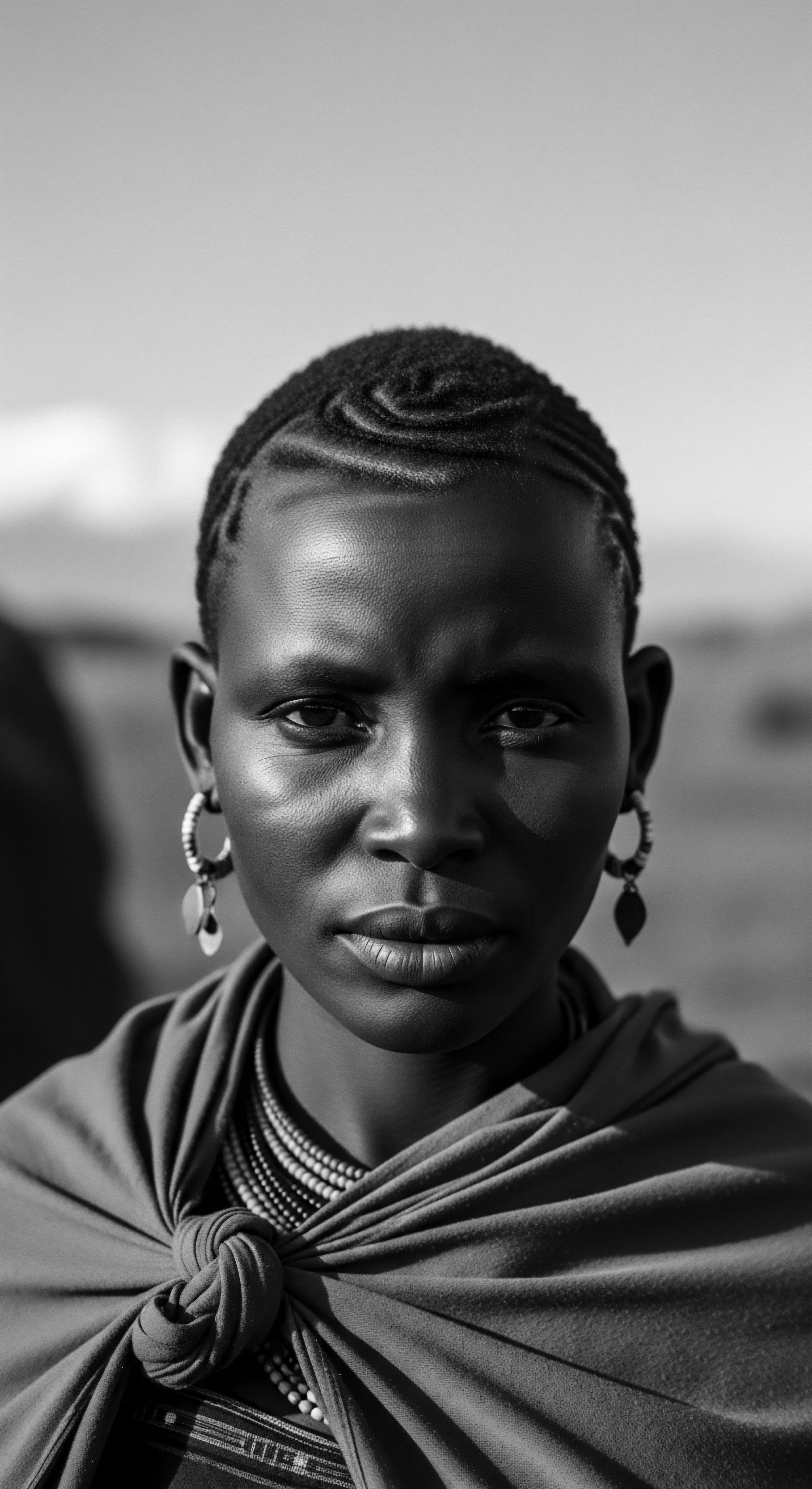
Academic
The Quechua Braids signify a complex intersection of ethnography, cultural anthropology, and the lived experience of embodied heritage. They extend beyond a mere styling choice, functioning as a profound semiotic system within Andean societies, particularly for the Quechua people residing across Peru, Bolivia, Chile, Colombia, and Ecuador. The meaning of these braids is not static; it is a dynamic expression of social, spiritual, and historical narratives, continually shaped by the interplay of indigenous traditions and external influences.
The braids’ delineation as indicators of marital status—where two braids denote a married woman and a single or multiple braids a single woman—is a direct example of their sociological function as markers of identity. This communicative aspect of hair, where external styling acts as a visual language, finds parallels across many indigenous cultures globally. In ancient Andean worldviews, hair was also deeply believed to be a conduit for the flow of spiritual power, connecting individuals to sacred entities and the broader cosmos (Lozada & Tantaleán, 2019, p. 195).
A comprehensive examination of Quechua Braids necessitates an interdisciplinary lens, drawing from bioarchaeology to understand historical hair health, ethnohistory to trace colonial impacts, and cultural studies to interpret contemporary manifestations. The historical context of the transatlantic slave trade and its ripple effects across Latin America, including Peru, adds another layer of complexity. While African hair braiding traditions independently existed for millennia, serving as symbols of identity, status, and even maps to freedom during enslavement, the interaction between indigenous Andean and Afro-descendant cultures in Peru, though less extensively documented in direct hair styling transfer, reveals broader patterns of cultural resilience and synthesis in the face of colonial oppression.
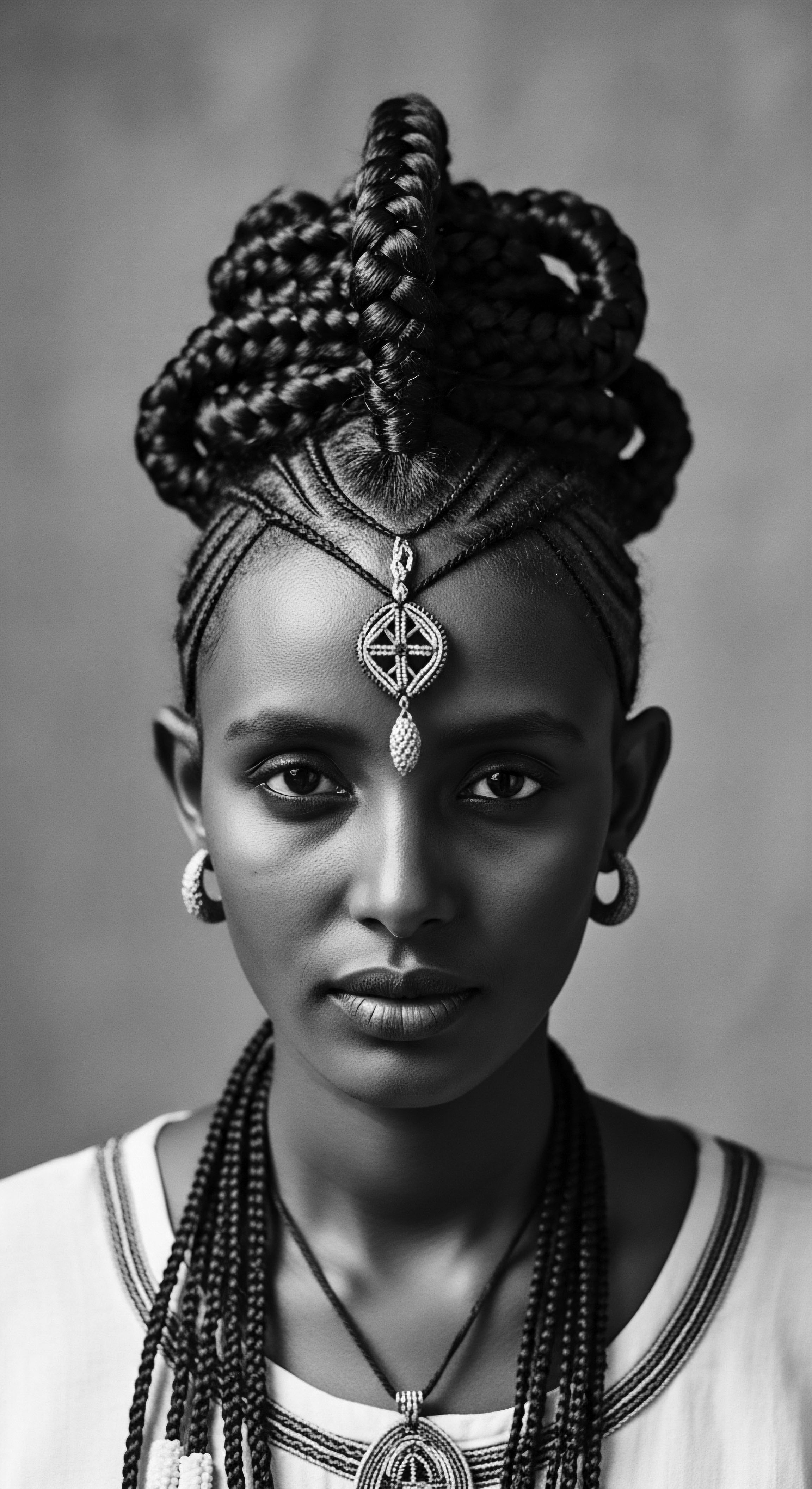
Confluence of Cultures ❉ The Afro-Peruvian Experience and Hair Heritage
The arrival of African people, primarily as enslaved individuals, starting in the 16th century, introduced new cultural dynamics to Peru. Afro-Peruvians, despite facing brutal exploitation and systemic discrimination, retained and adapted significant aspects of their African heritage, particularly in areas like music, dance, and cuisine. The forced migration of millions of Africans to the Americas, a monumental demographic shift, meant that the heritage of braiding as a form of cultural expression and resistance found new ground. (Thompson, 1987).
While direct historical records detailing the adoption of Quechua braiding styles by Afro-Peruvians, or vice versa, are not extensively publicized, the broader context of cultural exchange and shared experiences of resistance against colonial subjugation offers a compelling avenue for scholarly inquiry. Afro-Peruvians constituted a significant portion of the labor force in coastal areas, particularly on cotton and sugar cane plantations. This concentration in specific geographic areas likely fostered interactions with indigenous communities, leading to subtle, undocumented, but potent forms of cultural exchange.
The shared experiences of marginalization and the imperative to preserve identity through cultural practices would have created a fertile ground for such interactions. Consider the fact that by the 17th century, the Afro-Peruvian population was one of the largest in Latin America, at some points representing more than 60% of the Peruvian coast’s population.
Quechua Braids offer a profound study in cultural semiotics, revealing how hair can function as a dynamic script of collective identity and enduring heritage.
The academic meaning of Quechua Braids lies in their capacity to illustrate deeply embedded cultural continuities and adaptive strategies. They are not merely historical artifacts but living traditions that provide a window into ancestral epistemologies—ways of knowing and being that prioritize relationality, community, and the sacredness of the natural world. The deliberate artistic expression woven into Quechua textiles, used as a communicative artistic medium for ancestral stories and histories, parallels the expressive function of the braids themselves, indicating a broader cultural value placed on woven forms as carriers of knowledge.
A deeper comprehension of the Quechua Braids also invites us to consider the underlying biological and physiological aspects of textured hair itself. The hair types prevalent among Quechua populations and many Afro-descendant communities often share characteristics such as curl patterns, density, and protein structure, which influence how hair can be manipulated and styled. Understanding these shared biological foundations, coupled with distinct cultural histories, provides a richer appreciation for the ingenuity of traditional braiding techniques.
These techniques often serve to protect hair from environmental stressors, manage its growth, and minimize breakage—practical considerations that align with modern hair science principles of protective styling. This convergence of cultural practice and biophysical understanding renders the Quechua Braids a compelling subject for holistic inquiry.
The symbolic use of human hair in broader Andean rituals also provides significant context. During ceremonies like the rutuchicuy, the first hair-cutting ceremony for infants, relatives clip a wisp or small braid of a baby’s hair, offering money or a small animal in return. This ritual signifies more than a haircut; it marks the child’s entry into the community and establishes their kinship ties, emphasizing the communal and ceremonial import of hair from the earliest stages of life.
The hair, therefore, is not merely a biological outgrowth; it is a sacred material, intimately connected to a person’s life force and their social integration. This connection between hair and spiritual essence is a recurring theme across many indigenous traditions, including those of various Native American tribes, where hair is considered a physical extension of spirit and a symbol of power and resilience.

Academic Definitions of the Quechua Braids
From an academic standpoint, the Quechua Braids represent a complex cultural artifact, an ethnohistorical living text that articulates indigenous identity, social structure, and ancestral cosmological beliefs. Their meaning is an amalgamation of ❉
- Semiosis of Identity ❉ The braids act as non-verbal communicators of individual and communal identity, including marital status and regional affiliation, often adorned with elements that signify specific group markers or life stages. This is a deliberate, culturally encoded form of self-presentation.
- Embodied Knowledge ❉ The techniques for braiding, passed down through generations, encapsulate practical knowledge of hair care, natural materials, and the ergonomic realities of manual labor, demonstrating an ancient form of applied biological and environmental understanding.
- Resilience and Continuity ❉ As a practice that survived centuries of colonial imposition and cultural suppression, the braids symbolize the enduring strength of indigenous cultures and their ability to maintain core traditions despite profound external pressures.
- Spiritual and Cosmological Link ❉ Deeply rooted in Andean ontologies, the braids represent a tangible connection to spiritual power, ancestral wisdom, and the cyclical nature of time and being, where hair is seen as an extension of the soul and a conduit to the divine.
The study of Quechua Braids, therefore, moves beyond a descriptive account of hairstyles into a rigorous academic exploration of cultural persistence, social communication, and the profound symbolic weight that hair carries within human societies. It demands an appreciation for the intricate interplay between the material world and the realm of belief, recognizing that a seemingly simple hairstyle can hold a universe of meaning.
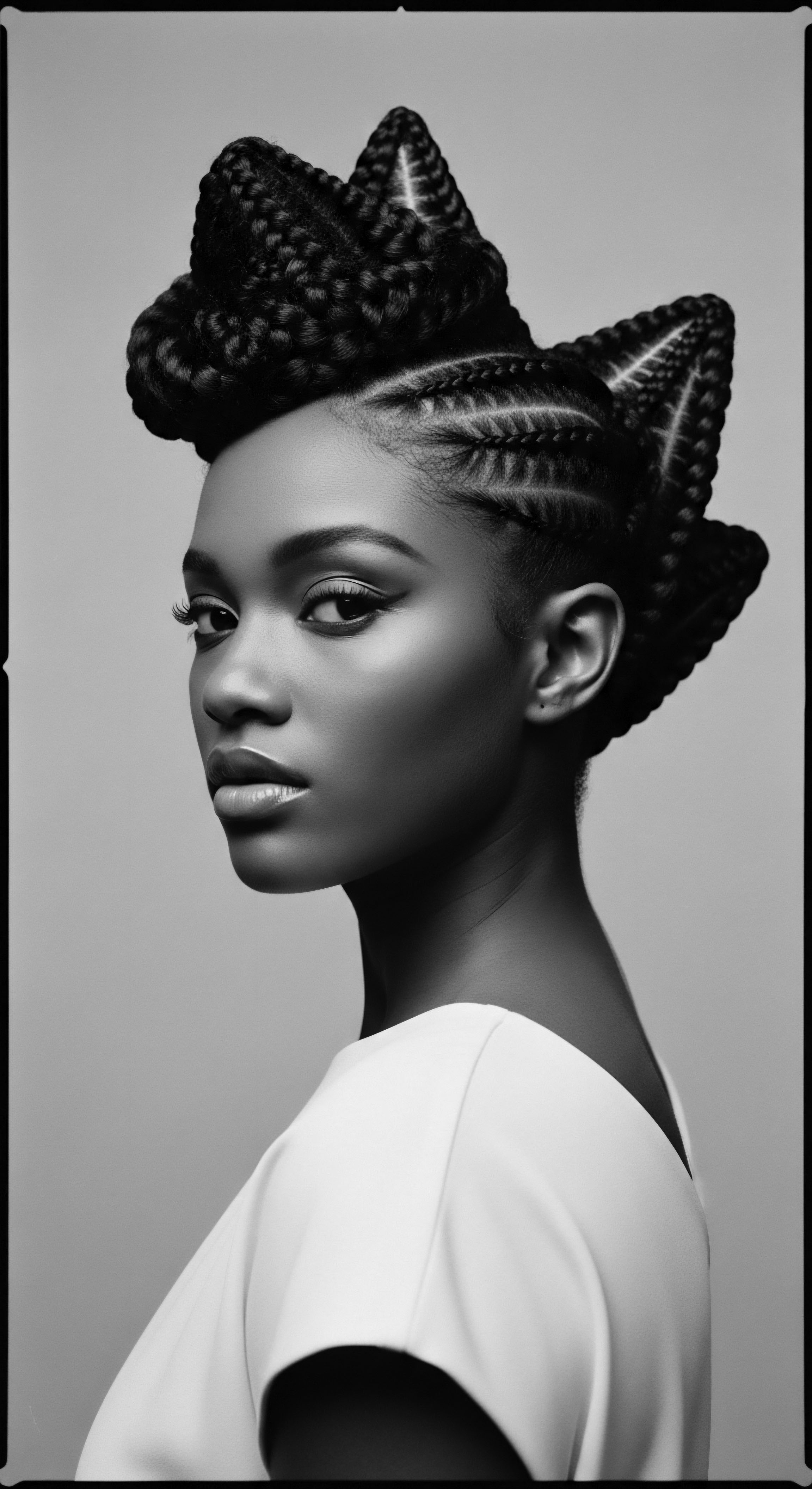
Reflection on the Heritage of Quechua Braids
As we close our gaze upon the rich landscape of Quechua Braids, a profound reflection emerges ❉ they are more than mere strands artfully arranged. Each braid holds whispers of ancestral wisdom, a living legacy passed from elder to child, imbued with stories of the land, the spirits, and the enduring human heart. These braids, seen through the lens of Roothea, become a vibrant testament to the ingenuity and fortitude of indigenous peoples, particularly those of the Andes. They speak of a holistic understanding where hair is not separate from self, community, or cosmos.
The very act of braiding, often communal and deeply personal, reflects a care ritual that transcends the superficial, nourishing not just the hair, but the spirit that resides within each strand. It reminds us that true beauty is cultivated from a deep reverence for our origins, and a mindful connection to the traditions that sustain us. The Quechua Braids, therefore, stand as a powerful reminder of how heritage, when truly honored, can shape both individual identity and collective future, a constant, gentle current flowing from the wellspring of ancestral knowledge into the unbounded possibilities of tomorrow.

References
- Lozada, M. C. & Tantaleán, H. (Eds.). (2019). Andean Ontologies ❉ New Archaeological Perspectives. University Press of Florida.
- Sherrow, V. (2023). Encyclopedia of Hair ❉ A Cultural History. Greenwood.
- Thompson, V. B. (1987). The Making of the African Diaspora in the Americas, 1441-1900. Longman.
